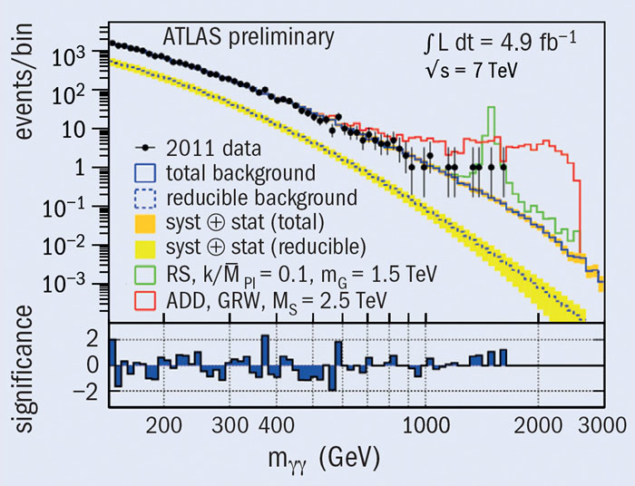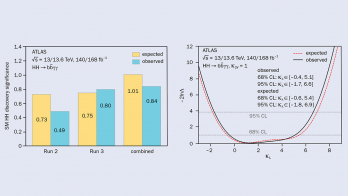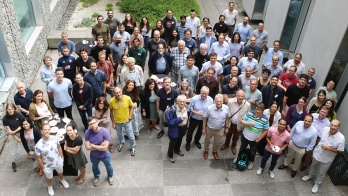Photons are a critical tool at the LHC, and the ATLAS detector has been carefully designed to measure photons precisely. In addition to playing a central role in the recent discovery of a new particle resembling the Higgs boson, final states with photons are used both to make sensitive tests of the Standard Model and to search for physics beyond it.
Recent results from the ATLAS experiment using the full 2011 data set are shining new light – in more than one sense – on theoretical models that propose the existence of extra dimensions. In these models, which were originally inspired by string theory, the extra dimensions are “compactified” – finite in extent, they are curled up on themselves and so small that they have not yet been observed. Such models could answer a major mystery in particle physics, namely the weakness of gravity as compared with the other forces. The basic idea is that gravity’s influence could be diluted by the presence of the extra dimensions. Different variants of these models exist, with corresponding differences in how they could be detected experimentally.

Events with two energetic photons provide a good place to search. In the Randall-Sundrum (RS) models of extra dimensions, a new heavy particle could decay to a pair of photons. A plot of the diphoton mass should then reveal a narrow peak above the smooth background expected from Standard Model backgrounds. In Arkani-Hamed-Dimopoulos-Dvali (ADD) models, on the other hand, the influence of extra dimensions should lead to a broad excess of events with large diphoton masses.
The figure shows the diphoton mass spectrum measured by ATLAS. The Standard Model background expectation has been superimposed, as have contributions expected for examples of RS or ADD signals. The data agree well with the background expectation and provide stringent constraints on the extra-dimension models. For instance, the mass of the RS graviton must be larger than 1–2 TeV, depending on the strength of the graviton’s couplings to Standard Model particles.
ADD models can also be probed via the single-photon final state. The ATLAS collaboration has searched for single photons accompanied by a large apparent imbalance in the energy measured in the event, which would result from a particle escaping into the extra dimensions and taking its energy with it. The ATLAS analysis found a total number of such events in agreement with the expectation for the small Standard Model backgrounds. The final result, therefore, was used to establish new constraints on the fundamental scale parameter MD of the so-called ADD Large Extra Dimension (LED) model. The lower limits set on the scale, which improve on previous limits, lie in the range 1.74–1.87 TeV, depending upon the number of extra dimensions.
As expected, photons are proving to be an extremely useful probe for new physics at the LHC, providing important tests of many models. With the higher LHC energy in 2012 and the larger data set being accumulated, photon analyses will continue to provide an ever greater potential for discovery.
Further reading
ATLAS collaboration 2012, ATLAS-CONF-2012-087.
ATLAS collaboration 2012, ATLAS-CONF-2012-085.








